This is a comprehensive guide on how to change the gears on a road bike or a mountain bike.
Road bike shifters can feel intimidating at first, but this guide provides step-by-step instructions on how to use Shimano, SRAM and Campagnolo drop-bar shifters.
On the best road bikes, the shifters and brakes are usually integrated into one unit. There are slight variations on the design, but this is by far the most common design on modern drop-bar bikes. They are sometimes referred to as 'brifters'.
The best mountain bikes (and the best hybrid bikes) use flat-bar shifters. While they are pretty intuitive, there are different designs, so we've provided instructions for the main two types: thumb shifters and grip shifters.
When should I change gears?
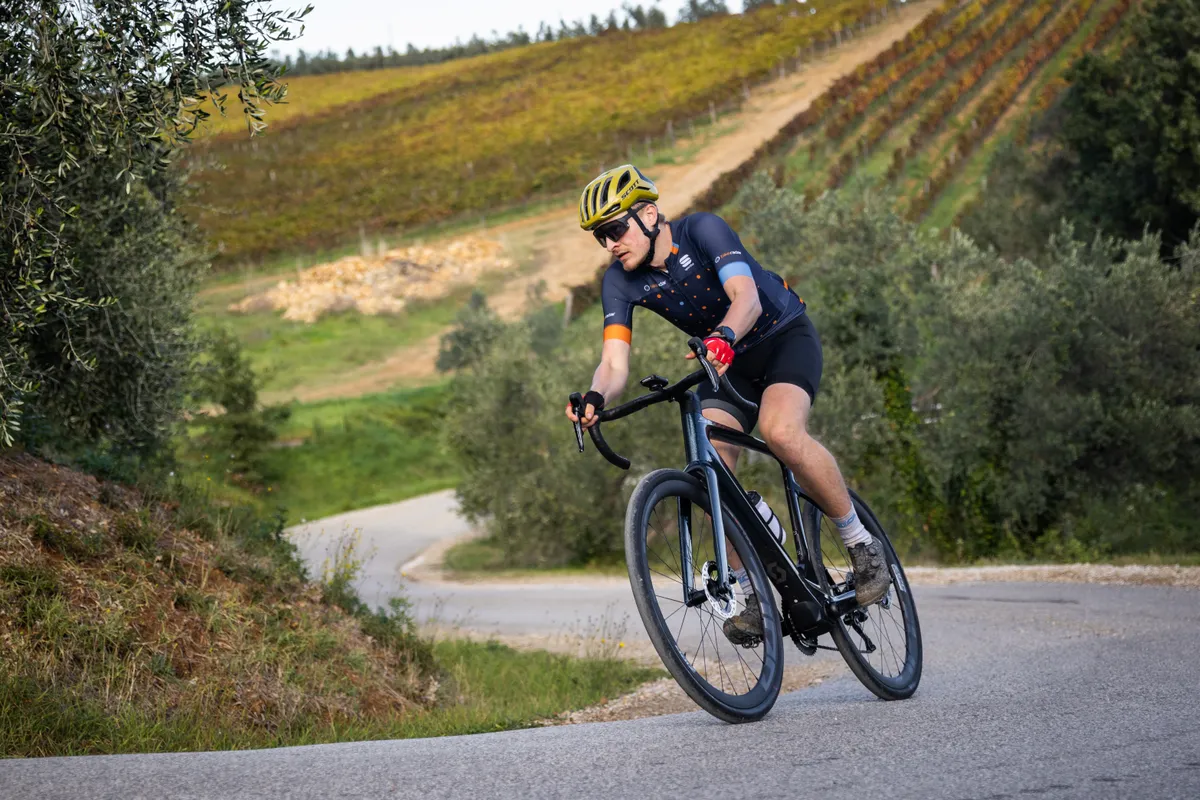
Bicycle gears enable you to cycle faster and climb hills with ease. They also help you maintain a comfortable pedalling speed.
You should ideally pedal at a cadence (the number of revolutions of the crank per minute) of 70 to 100rpm, although this can differ between riders.
You should change into an easier gear whenever climbing up hills or inclines. Use a harder gear when cycling on the flat or if you ever feel there's little resistance when pushing on the pedals.
It’s a good idea to keep an eye on the road ahead and anticipate when you need to change gear. For example, if you’re about to start a climb, it's worth changing into an easier gear just before it starts so you can tackle the ascent with ease.
Similarly, if you know you’re about to come to a stop at a traffic light, for instance, it’s wise to shift down into an easier gear. This will make starting again much less effort.
As you start to feel more comfortable with the gears, it’s worth experimenting with different combinations of gears to work out what’s best for your style of riding.
Some bikes will display which gear you’re in on the handlebar, but others will require you to take a quick glance at the front chainring or cassette. Eventually, changing gear will feel intuitive and you’ll likely know when to change gear without looking.
How to change gears on a road bike
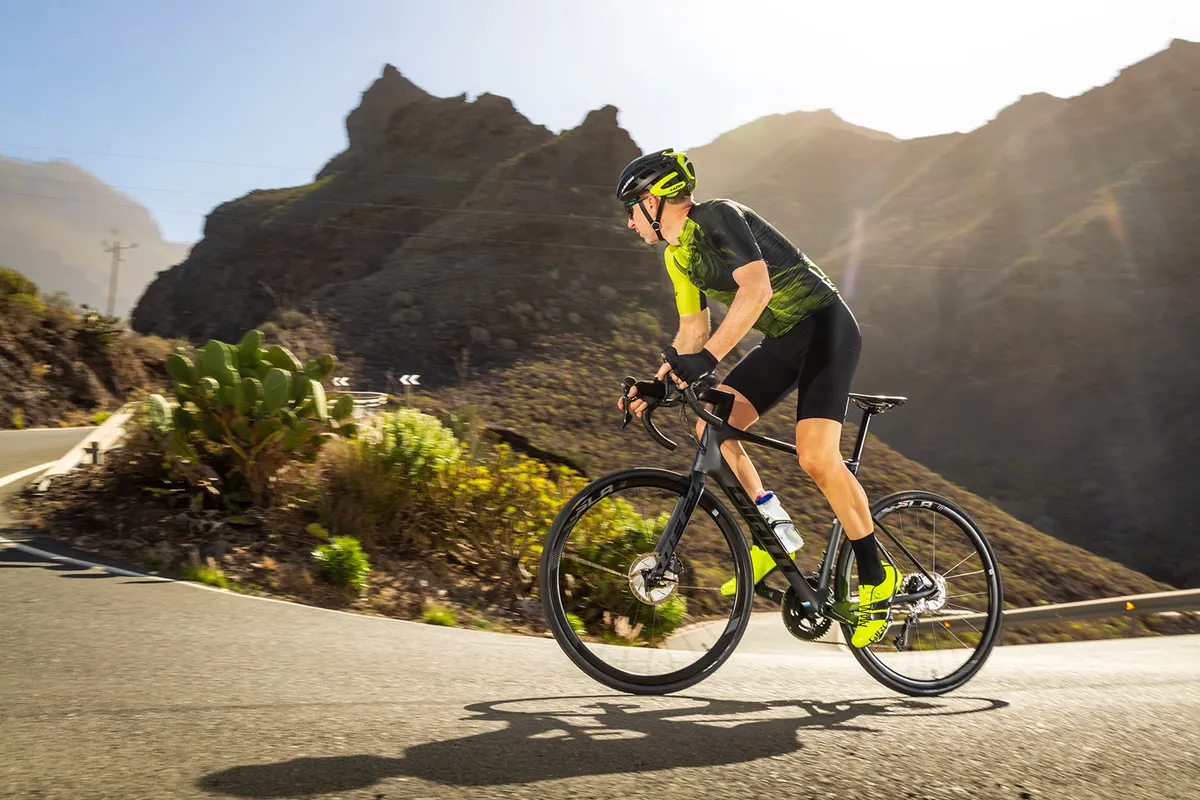
You can change the gears on your road bike when riding on the hoods (this is when your hands are on the top of the shifters and will be your most-used position on the bike) or from the drops.
We have a more in-depth look at exactly how your gears work, which is well worth referring to if you're a new rider but, as a brief refresher to make the language below more clear:
- Easy gear (smaller chainrings, bigger cassette cogs) = smaller gear
- Harder gear (bigger chainrings, smaller cassette cogs) = bigger gear
However, just to make matters more confusing:
- Upshift = harder gear
- Downshift = easier gear
Lastly, talking about moving 'up the cassette' is a more ambiguous term. When we use it on BikeRadar, it's in its most literal interpretation:
- Up the cassette = from a smaller cog to a larger cog
- Down the cassette = from a larger cog to a smaller cog
With that roughly as clear as mud, here's how you go about using your road shifters.
How to use Shimano road bike shifters
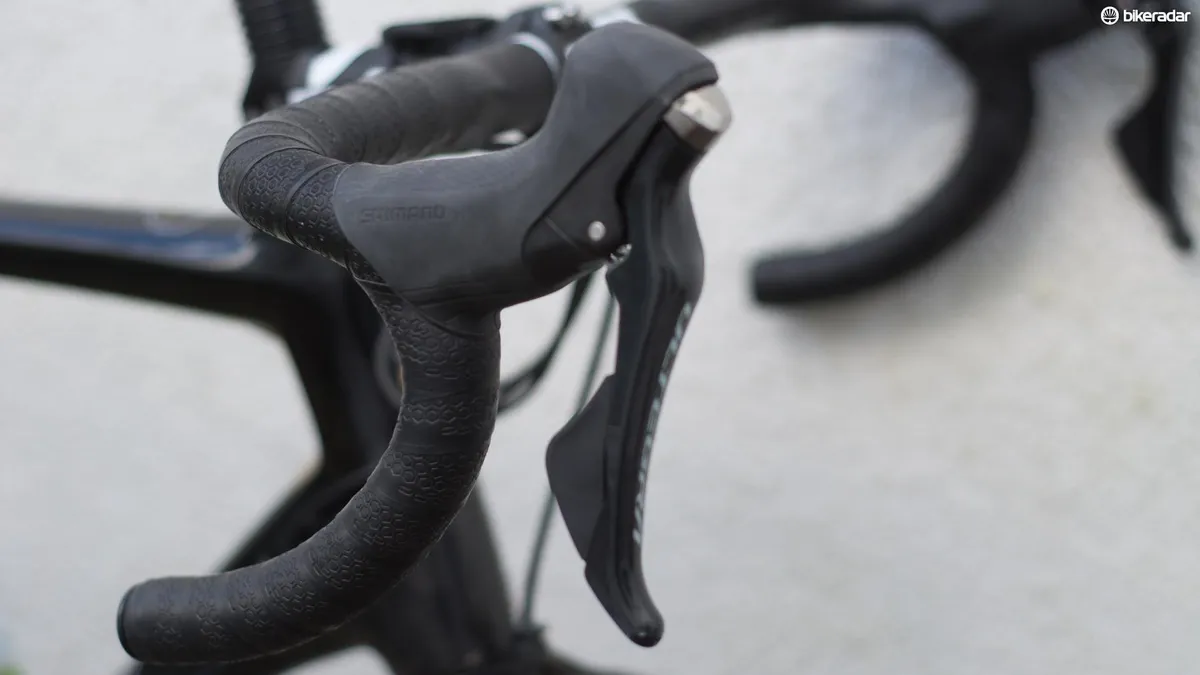
Shimano Total Integration (STI) shifters use a split-lever design to change gears.
A small lever just behind the brake lever shifts the chain onto a smaller cog, while the whole brake lever can be pushed to the side to shift to a larger cog.
- Right-hand shifter controls rear shifting: Push the inner, smaller paddle inboard (sweeping from right to left) to shift down the cassette into a smaller cog (a bigger/harder gear). Push the brake lever inboard (the small shift paddle will come with it) to shift up the cassette into a larger (easier/smaller) gear.
- Left-hand shifter controls front shifting: Push the inner, smaller paddle inboard (sweeping from left to right) to drop down into the smaller (smaller/easier) chainring. Push the brake lever inboard (the small shift paddle will come with it) to shift into a larger (bigger/harder) chainring.
Shimano shifters also feature a trim function on the front (left-hand) lever. Shifting the inboard lever with a smaller throw (roughly half as much as a normal shift) will move the cage of the front derailleur inboard to prevent the chain rubbing in certain gears.
Di2 (electronic) Shimano gears function in exactly the same way, but the mechanical innards of the shifting mechanism are replaced with small buttons. These can, however, be re-programmed to suit your needs and desires.
How to use SRAM road bike shifters
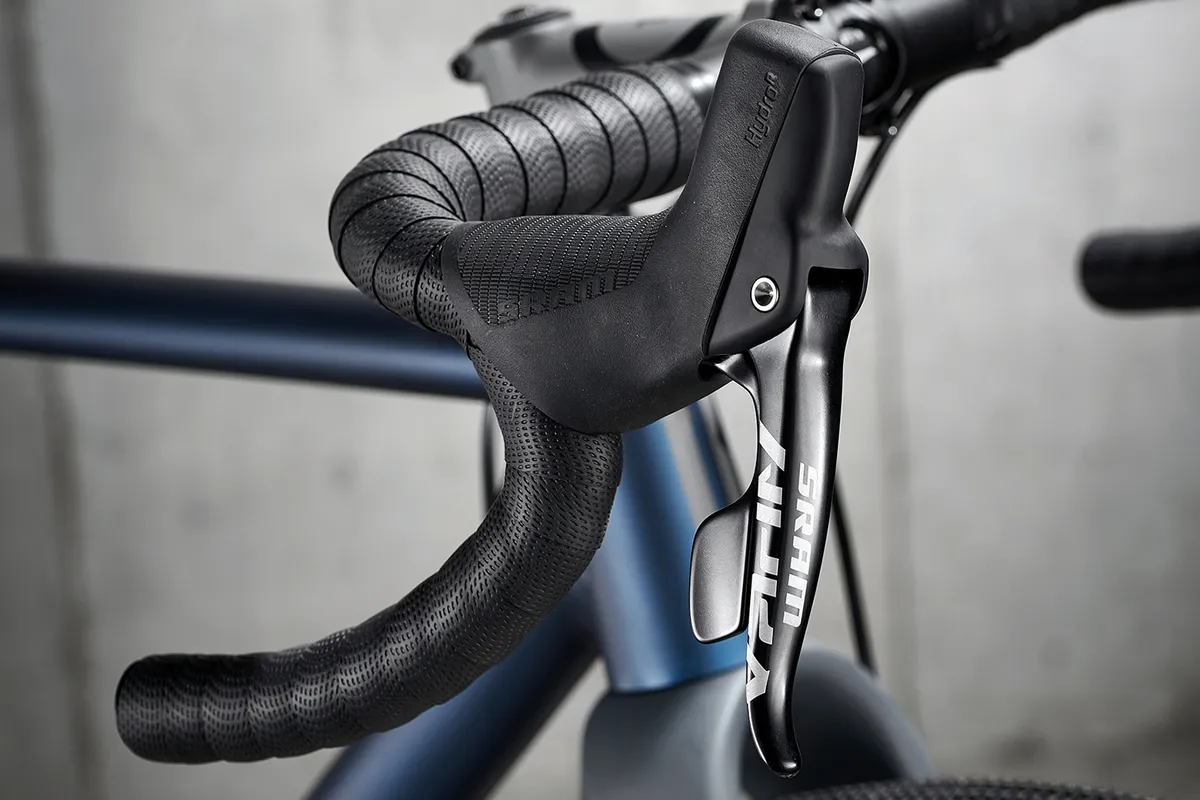
SRAM DoubleTap shifters use a single paddle to shift both up and down. A short click will shift into a smaller cog, and pushing the lever further will shift into a larger cog.
- Right-hand shifter controls rear shifting: Push the paddle inboard (sweeping right to left) a small amount to shift down the cassette into a smaller cog (a bigger/harder gear). Push the paddle further inboard to shift up the cassette into a larger (easier/smaller) gear.
- Left-hand shifter controls front shifting: Push the paddle inboard (sweeping left to right) a small amount to shift down into a smaller chainring (a smaller/easier gear). Push the paddle further inboard to shift up into a larger (harder/larger) gear.
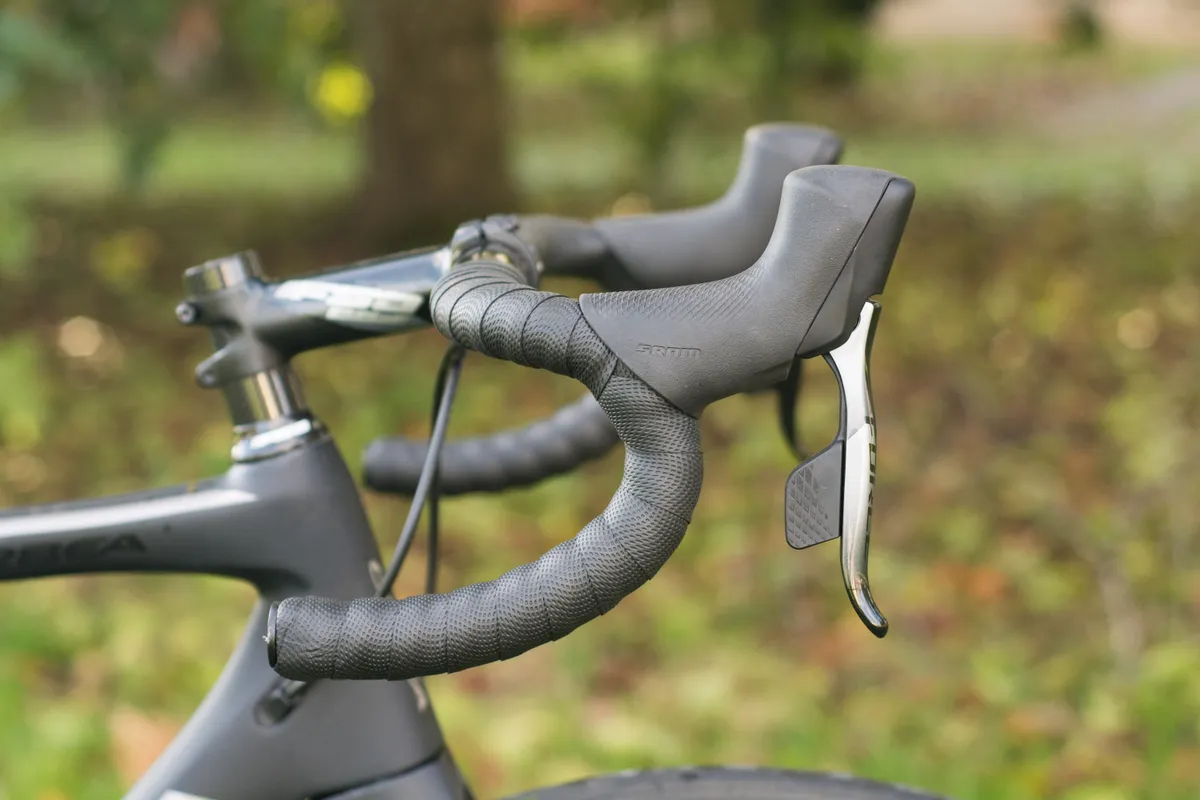
eTap is SRAM's electronic shifting system. Functionality can be customised almost endlessly, but set up to its factory defaults:
- Right-hand paddle: Click the shift paddle to shift down the cassette into a smaller cog (a larger/harder) gear.
- Left-hand paddle: Click the shift paddle to shift up the cassette into a larger cog (a smaller/easier) gear.
- Both paddles together: Push both shift paddles simultaneously to shift between chainrings.
How to use Campagnolo road bike shifters
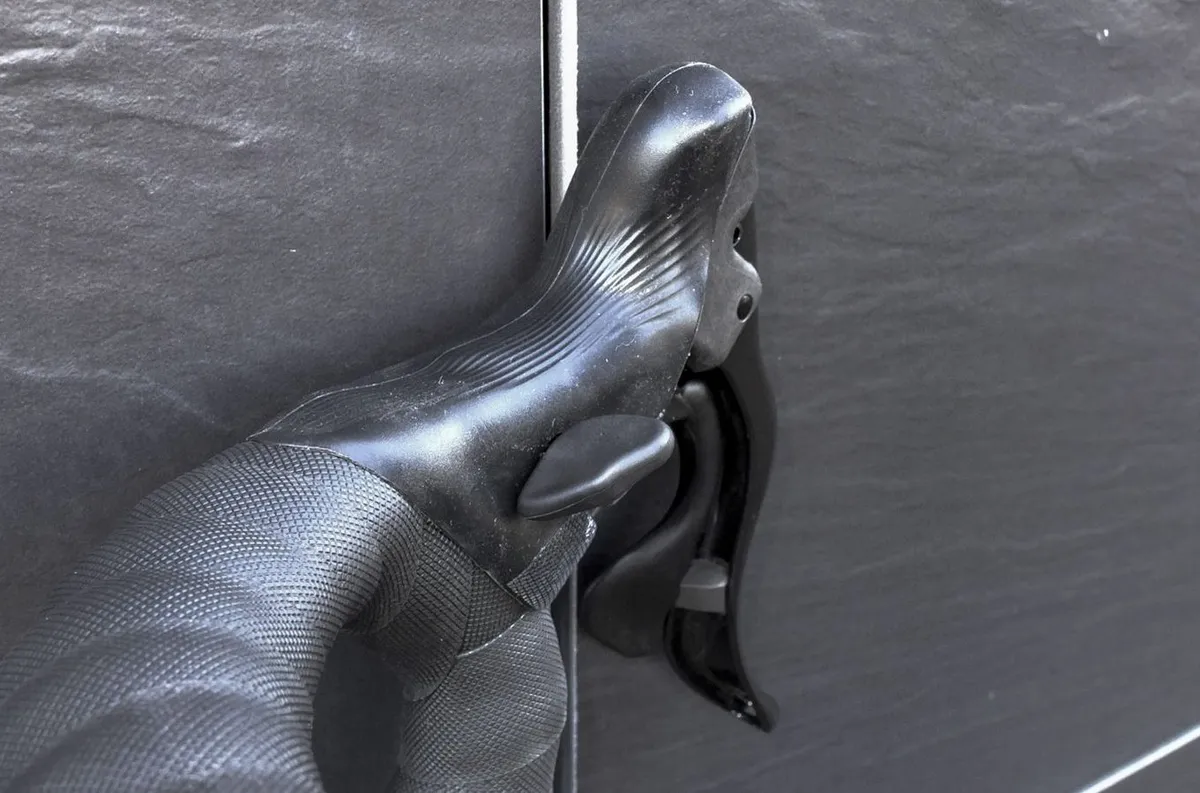
Campagnolo shifters are slightly different again – a shift lever behind the brake lever shifts into a larger cog/chainring on both the front and rear, while a thumb-operated paddle on the inside of the hood shifts into a smaller cog/chainring.
- Right-hand shifter controls rear shifting: Push the shift lever behind the brake lever inboard (sweeping right to left) to shift up the cassette into a larger cog (a smaller/easier gear). Push down on the thumb paddle to shift down the cassette into a smaller cog (a bigger/harder gear) on the cassette.
- Left-hand shifter controls front shifting: Push the shift lever behind the brake lever inboard (sweeping left to right) to shift up into a larger chainring (a larger/harder gear). Push down on the thumb paddle to shift down into a smaller chainring (a smaller/easier gear).
EPS (Campagnolo's electronic shifting system) mimics the action of the mechanical shifters but, as with Shimano and SRAM, functionality can be customised.
How to use bar-end shifters and down-tube shifters
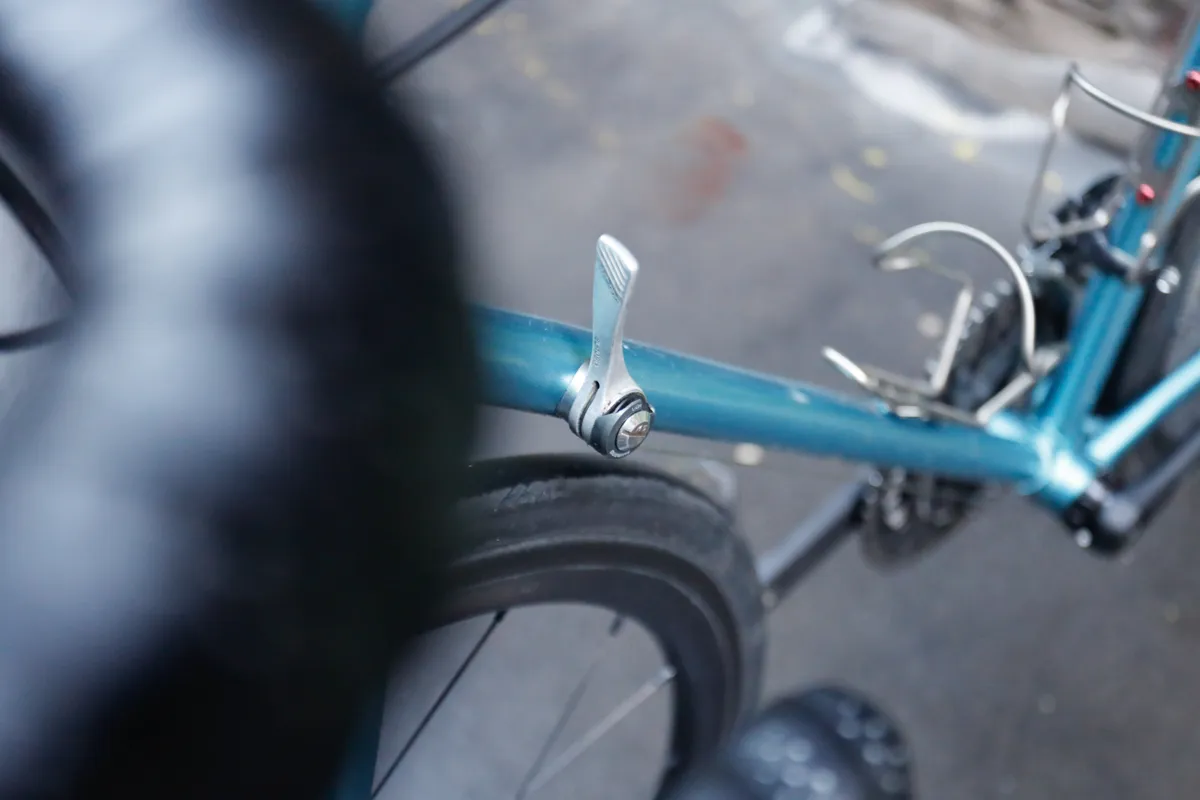
Bar-end shifters slot into the end of the bars and provide a lever that actuates your gears. These are very similar to thumb shifters and are available in both indexed and friction shifter forms.
These have popped up a little more recently, providing a simple way of combining a hub gear with drop-bar brake levers.
Down-tube shifters work in much the same way, but as the name suggests, these are located on the down tube of the bike.
Moving either of these levers towards or away from you will shift up or down the cassette or crankset.
How to change gears on a mountain bike
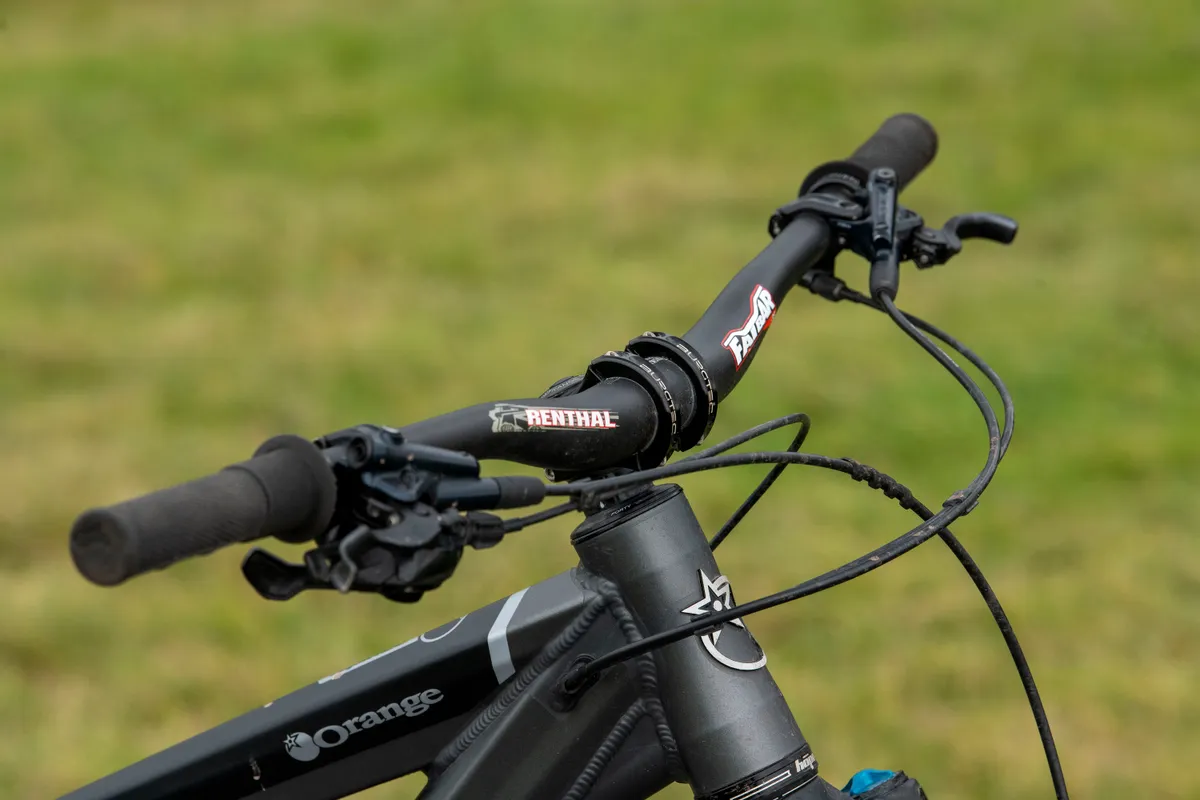
Mountain bike gears are typically actuated with flat-bar shifters (which you also see on hybrid bikes), where you rest your hands on the bars rather than spending time on the hoods of road bike shifters.
These shifters often work the same way across brands, but can vary. Sometimes, these shifters are integrated with brake levers, but they aren’t always. Some will have dials showing which gear you're in, whereas others will forgo this feature.
Thumb shifters
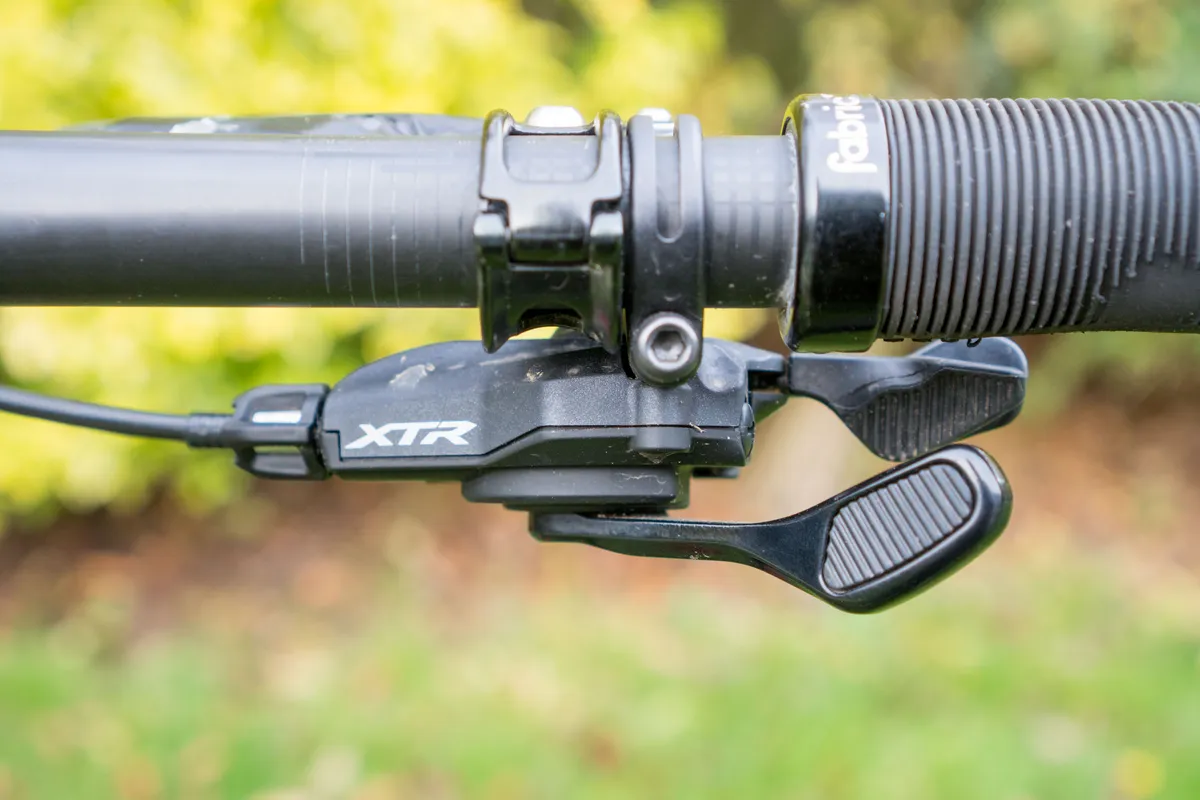
Thumb shifters have two levers that enable you to toggle between higher (harder) and lower (easier) gears.
These levers will often be positioned so one is effectively underneath your handlebar and operated with your thumb, while the other is above your handlebar and operated with your index finger. Others will have two levers next to one another underneath the handlebar, both of which can be operated with your thumb.
The function of the two levers depends which side of the handlebar they are on:
- Right-hand side: The thumb shifter on the right-hand side of your handlebar will be the one you use most because it changes the sprocket on the cassette. You use the larger thumb-operated lever closer to you to move into a harder gear. You use the smaller lever hidden behind the larger lever to shift into an easier gear.
- Left-hand side: The thumb shifter on the left-hand side of your handlebar operates the front derailleur, changing between the chainrings at the front. This works the other way round to the shifter on the right-hand side, so you use the larger lever to move into an easier gear, and the smaller lever to move into a harder gear.
Some SRAM Eagle AXS shifters use a single-piece design with two button functions on a rocker-style system. You can customise which button performs which function.
Grip shifters
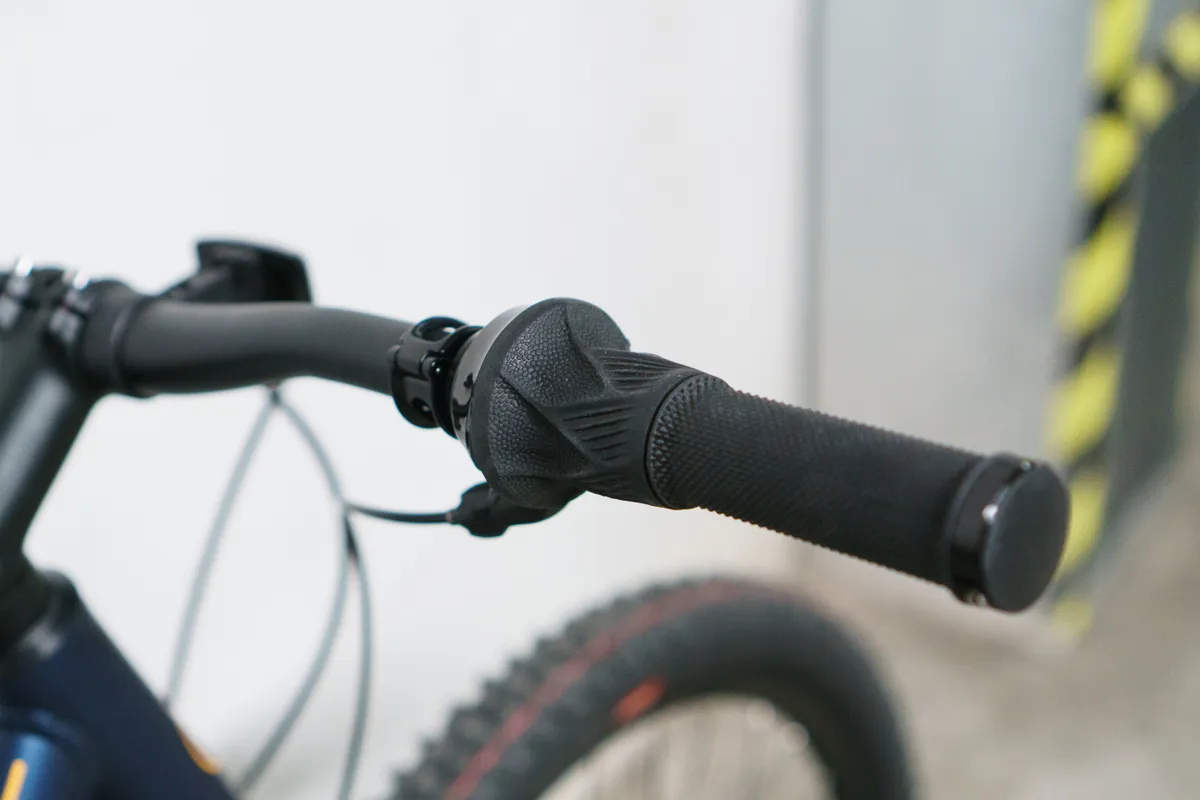
Grip shifters work similarly to thumb shifters, but instead of being a lever-operated system, they rely on you gripping them and twisting your hand either toward or away from you to change gear.
Grip shifters used to be common across adult mountain bikes, but now they are more often seen on the best kids' bikes. SRAM does, however, still produce grip shifters for its mechanical mountain bike groupsets.
Like thumb shifters, you use the left-hand and right-hand grip shifter differently to change up or down:
- Right-hand side: The grip shifter on the right-hand side of your handlebar changes the sprocket on the cassette. You twist it away from you to move down the cassette into a harder gear. You twist it towards you to move up the cassette into an easier gear.
- Left-hand side: The grip shifter on the left-hand side of your handlebar operates the front derailleur and moves the chain between the front chainrings. You twist the grip towards you to move into a larger chainring and harder gear. You twist the grip away from you to move into a smaller chainring and easier gear.
